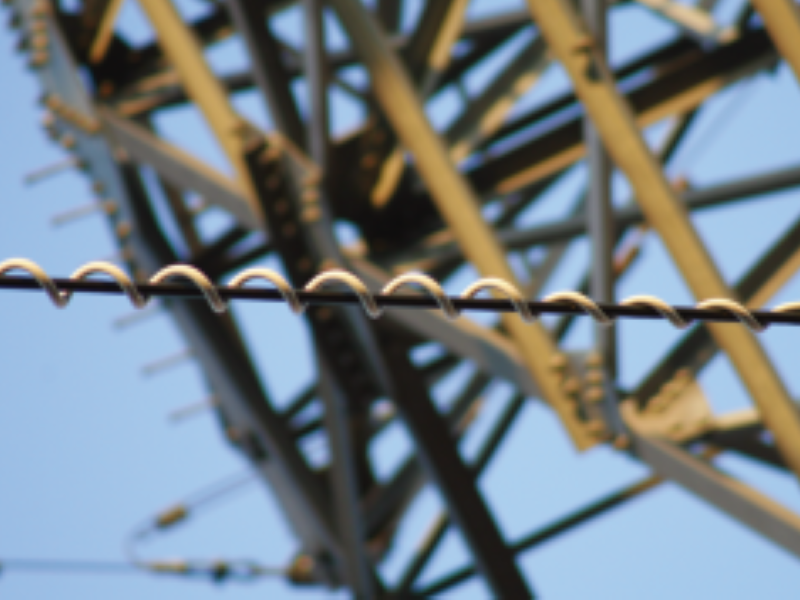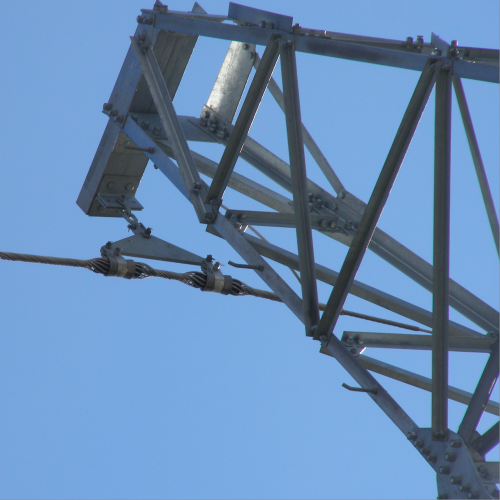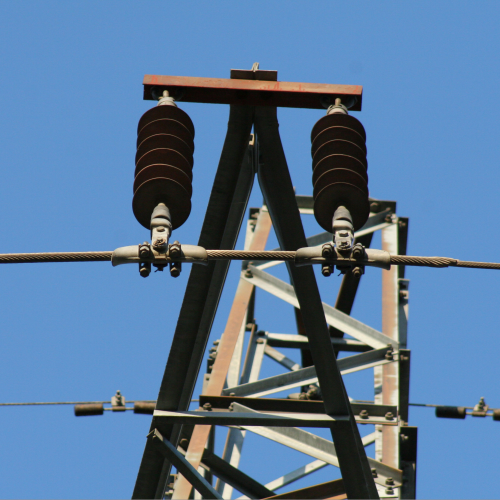The working principle of spiral vibration damper is to weaken the vibration energy generated by the overhead wire under the action of wind through the dual effects of energy dissipation and vibration suppression, so as to prevent vibration from causing damage to the wire and related metal fittings. When the wind blows through the overhead wire, periodic eddy currents will form on the back of the wire. This eddy current will produce alternating pneumatic forces on the wire, causing the wire to vibrate laterally perpendicular to the wind direction, which is the breeze vibration. The frequency of this vibration is higher and the amplitude is small, but the long-term continuous effect will cause the wire to produce repeated bending stress at the suspension point, connecting fittings and other parts, resulting in fatigue and fracture of the wire, and it will also intensify the wear between the fittings and the wire, shortening the service life of the equipment. spiral vibration damper can effectively suppress breeze vibration in response to this problem through special structural design and material selection.

Spiral vibration damper is usually made of highly elastic, aging-resistant rubber or composite materials. It has a spiral or rod shape. It is fixed in parallel at both ends of the wire when installed, and maintains a certain contact pressure with the wire. When the wire vibrates with a breeze, the spiral vibration damper will follow the vibration of the wire and move synchronously, and its own elastic structure will also deform during the vibration. During the deformation process, friction will occur between the molecules inside the spiral vibration damper, and at the same time, the contact parts between the spiral vibration damper and the wire will also produce sliding friction. These friction effects will convert the mechanical energy of the wire vibration into heat energy and dissipate it into the air in the form of heat, thereby realizing the dissipation of vibration energy. In addition, the mass distribution and stiffness characteristics of spiral vibration damper have been precisely designed to match the vibration characteristics of the wire. When the wire vibrates, spiral vibration damper will produce inertial forces in the opposite direction of the wire vibration. This inertial force will hinder the vibration of the wire, further reducing the vibration amplitude and frequency of the wire.
Under different working conditions and environments, the work performance of spiral vibration damper will also be adaptively adjusted according to actual needs. For example, in coastal areas or plateau canyons with strong winds and severe vibration, our spiral vibration damper uses reinforced elastic materials. The elastic modulus and fatigue resistance have been specially optimized to withstand greater vibration deformation while extending its own service life. In low-temperature and cold areas, spiral vibration damper's material formula has added an anti-low-temperature toughening agent to prevent the material from brittleness and loss of elasticity in low-temperature environments. Even at extremely low temperatures, spiral vibration damper can normally exert vibration suppression. In tropical areas with high temperature and humidity, the surface of spiral vibration damper is covered with a weather-resistant coating, which can effectively resist ultraviolet radiation and rainwater erosion, prevent material aging and cracking, and ensure long-term anti-vibration effect.




